Welcome to Dali! A city where ancient history whispers among mist-shrouded mountains and the calm waters of Erhai Lake reflect the slow-paced lifestyle of its inhabitants. Nestled in China’s Yunnan Province, Dali is a haven for those seeking tranquility, cultural richness, and a deep connection with nature. This travel guide invites you on a journey through a city that has managed to retain its charm and traditions amidst the ever-changing tides of time.
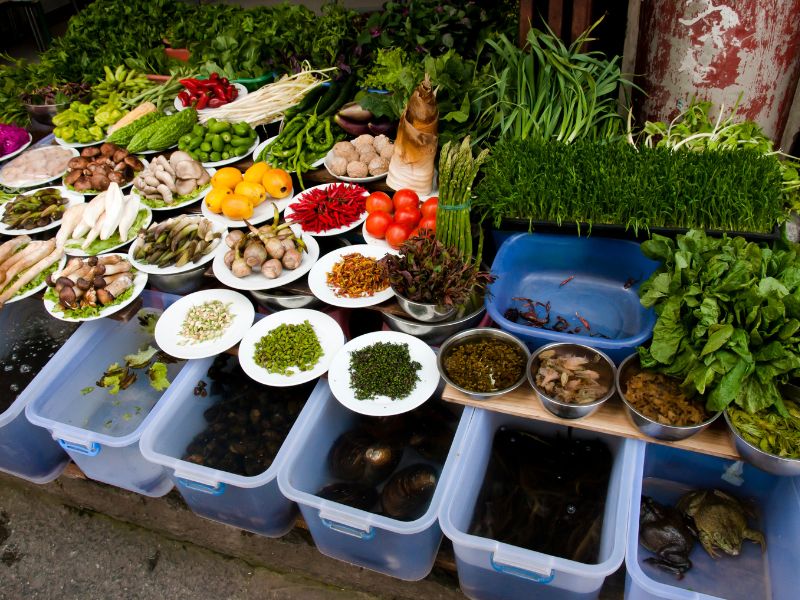
A City Steeped in History
Dali’s story is as captivating as the landscapes that surround it. Once the heart of the Nanzhao and Dali Kingdoms, this city is a living museum, with its ancient city gates, traditional Bai architecture, and the majestic Three Pagodas standing as silent witnesses to a bygone era. Exploring Dali’s cobbled streets and ancient structures is like stepping into a painting, where every corner tells a tale of dynasties, battles, and a rich cultural heritage that has survived the test of time.
Nature’s Masterpiece
Surrounded by the Cangshan Mountains and overlooking the vast Erhai Lake, Dali offers natural beauty that can soothe the weariest of souls. Whether you’re hiking the mountain trails, cycling around the lake, or simply enjoying a quiet moment in one of its many hidden gardens, Dali’s landscapes provide a perfect backdrop for adventure and introspection.
A Melting Pot of Cultures
Dali is home to the Bai people, known for their vibrant traditions, exquisite handicrafts, and warm hospitality. The city’s markets and festivals are a riot of colors, flavors, and sounds, offering a glimpse into the lives of its indigenous communities. From the daily morning markets to the grand celebrations of the Bai’s March Street Festival, Dali’s cultural tapestry is as intricate as it is fascinating.
Culinary Delights
The cuisine in Dali is as diverse as its culture. Local dishes are a blend of fresh ingredients from the mountains and lake, offering flavors that are both bold and comforting. Don’t miss out on trying the local cheese, “rushan,” or the savory “xiangyun” ham, and let your taste buds embark on a journey of their own.
The Artistic Soul
Art and creativity flow through Dali’s veins, with numerous galleries, craft workshops, and music venues scattered across the city. The vibrant art scene is a testament to the city’s enduring spirit of expression and innovation. In Dali, art is not just observed; it’s lived and breathed, inviting visitors to not only see but also partake in its creation.
So pack your bags and get ready to discover the wonders of Dali.
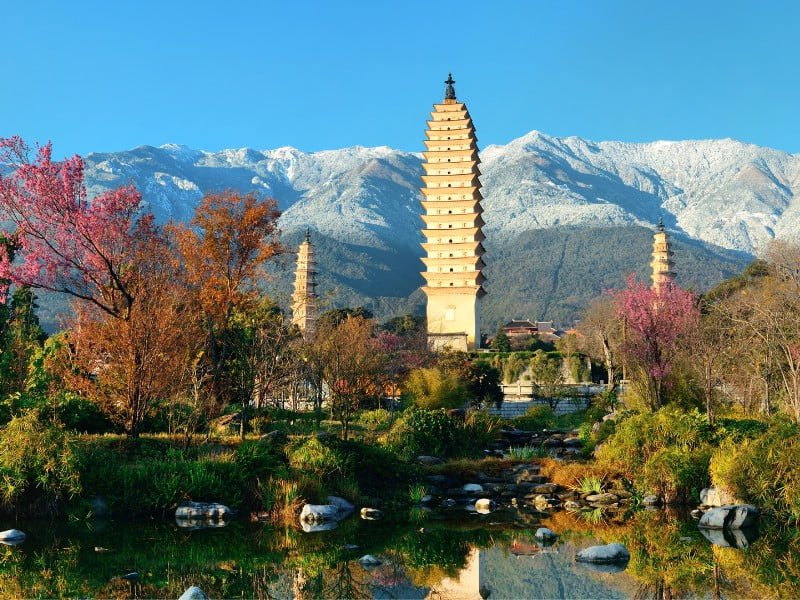
Dali City Guide: A Brief History Of Dali, China
Dali, with its laid-back vibe and stunning vistas, carries stories that stretch back into the mists of ancient history. It’s a place where every alleyway and breeze from Erhai Lake seems to whisper tales from the past. Dive into Dali’s history, and you’re in for tales of kingdoms, conquests, and a cultural tapestry that’s as vibrant as the local tie-dye.
Way Back When
Long before Dali became the poster child for serene getaways, it was home to the Bai people, who’ve been around for more than a millennium. Picture this: ancient tribes settling by the bountiful Erhai Lake, carving out a living and setting the stage for a rich cultural legacy. Fast forward a bit, and you’ve got the Nanzhao and Dali Kingdoms turning the place into a buzzing hub that attracted traders, artists, and monks like bees to honey.
Dynasty Drama
Imagine Dali as the backdrop for a historical epic, its streets bustling with traders from distant lands and scholars debating in the courtyards of majestic temples. The city was a beacon of culture and Buddhism during the Nanzhao and later Dali Kingdoms, kind of like the ancient world’s trendsetter. But as with all epic tales, the plot twists with the arrival of the Mongols, who added their own chapters to Dali’s story, blending cultures in ways that changed the city’s course.
The Mongol Makeover
When the Mongols rolled in during the 13th century, Dali’s days of independence were put on pause, but that didn’t dampen the city’s spirit. Dali adapted, absorbed new influences, and kept its cultural flame burning bright. It’s this blend of the old and new, the indigenous and the foreign, that gives Dali its unique character today.
A Modern-Day Muse
Fast forward to modern times, and Dali has become a haven for the creative soul, attracting a new wave of artists, writers, and dreamers drawn to its beauty and tranquility. The city’s history and natural landscapes provide endless inspiration, making it a place where past and present coexist in harmony.

Dali Top Attractions and Best Places to Visit in China
A long-time backpacker haunt for its authentic Chinese atmosphere and the mountains which surround it, Dali is equally as popular among domestic tourists today. In short, it is a popular place on the travel trail in China, but for good reason.
With much to see and do, you could easily spend a week here, so be sure to get this region plenty of time.
Start your time in this popular destination in Yunnan by exploring the Ancient City of Dali. Located thirteen kilometres away from the centre of the modern city of Dali, this well-preserved collection of buildings date from the Ming Dynasty.
Once an important trading and military post situated on a gateway to the Silk Road, it still contains temples, intact city walls, and folk-style homes which were once part of a vibrant community which held a great deal of importance in the region.
Fascinating Attractions
After you have gotten your fill of Dali’s Ancient City, make sure that Chongsheng Temple is next on your to-see list. Better known as the Three Pagodas after its primary attraction, these spires have been around for over 1,800 years and marked the time when Buddhism first arrived in the region.
Standing over 220 feet tall, these multi-tiered pagodas have a commanding presence on the skyline in the surrounding area, but that isn’t all there is to the temple complex; the main building itself is a serene place, and with an attractive bell tower and lush gardens, this place is well worth a visit.
Dali isn’t the only place in this part of Yunnan Province which has ancient buildings that have stood the test of time. After experiencing everything the city has to offer, plan a day trip out to the Ancient Town of Shaxi.
Once an important waypoint on what was known as the Yunnan-Tibet Tea Horse Road, Shaxi is an island of authenticity in a sea of sanitized reproductions of China’s past. Things may not be 100% squeaky clean here, but it is what it is – a place where real human beings still live, even after thousands of years of history.
More Attractions
Here, the same old temples, shops, markets, bridges, and other infrastructures serve the same purpose they have for many centuries – the more you walk around, the more you will realize this place is the real thing.
Whether you walk amidst its rice paddies or walk through the market when locals are buying everyday essentials from merchants who can trace their lineage back countless generations, you will find the off the beaten track experience you are desperately seeking in this time-tested town.
Nature lovers will enjoy their time in the Dali area, as it is situated close by to some of China’s most beautiful alpine scenery. If you don’t have time to wander this region’s high country at your leisure, at least make time in your schedule to see the Cangshan Mountains.
A mountain range with a peak elevation of over 13,000 feet, the views over the valley from the tops of these peaks are awe-inspiring. Active travellers will love the hiking opportunities they will find here, while those who sweat at the thought of exercise will be happy to learn there is a cable car available to allow them to enjoy the view from high above the valley that is home to the city of Dali.

Other Cultural Attractions: Trip to Dali, China
Do you still have an appetite for ancient towns after visiting the ones mentioned above? Xizhou Town is another old settlement you should see while in the Dali area. A relatively short day trip from Dali, this place was a thriving centre of commerce all the way up to 1949, the year when the Communist Party of China emerged victorious over the KMT.
While its buildings have deteriorated somewhat since that time, many feel that it lends an air of authenticity to this ancient town that the Dali Ancient City lacks. When you aren’t walking through the narrow streets of this atmospheric place, check out the local market – mostly free of the trinket stalls which plague much of Dali’s market, you’ll find wandering here to be a far more pleasant experience.
Other Attractions
Xizhou is situated on the shores of Erhai Lake, a body of water considered to be one of the most picturesque in China. Start your time here by having a coffee with breakfast overlooking its misty surface. Once you have finished up, check out the sightseeing boat cruise, as it will allow you to get out onto the water and experience the peacefulness of this lake up close.
Back in Dali, the Dali Foreigner Street is where you’ll want to go if you are looking for the greatest range of souvenirs from your time in this corner of Yunnan. Yes, there is some dinky plastic crap – but there are also exquisite wood carvings, silverware, and other fine local crafts.
Look carefully, and you’ll find something unforgettable to bring home with you.
source: One Shot Adventures on YouTube
Top 22 Things To Do in Dali, China For Visitors
Here are the top 22 things to do in Dali:
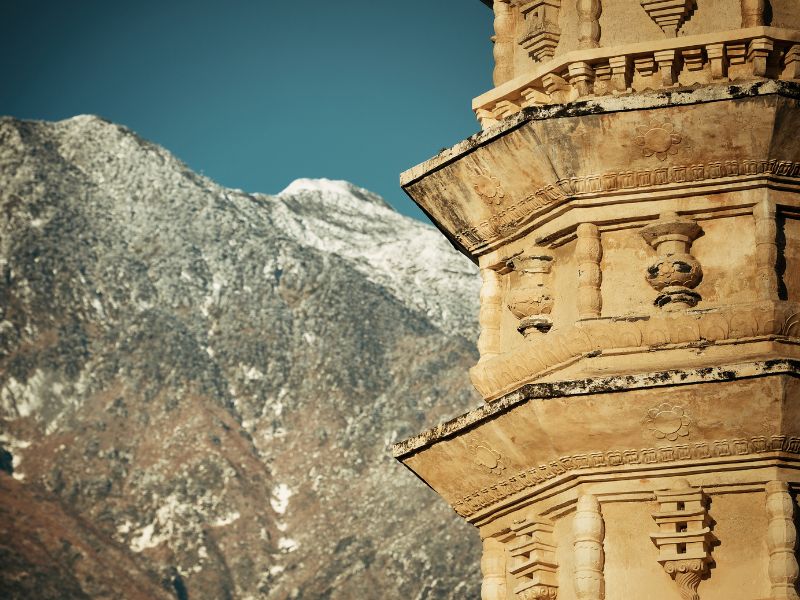
1. Explore the Ancient City of Dali
The Ancient City of Dali, also known as Dali Old Town, is a beautifully preserved area with traditional Bai architecture, cobbled streets, and vibrant markets. Walk through the ancient city gates and explore the bustling streets filled with artisan shops, cafes, and tea houses. Don’t miss the opportunity to try local snacks from street vendors. The area comes alive at night with lanterns illuminating the streets, offering a charming atmosphere.
2. Visit the Three Pagodas
The Three Pagodas, located northwest of Dali Old Town, are an iconic symbol of the city’s history and religious significance. These structures have withstood earthquakes and wars, dating back to the 9th and 10th centuries. The reflection of the pagodas on the nearby pond offers a spectacular photo opportunity. Visitors can also explore the Chongsheng Temple complex behind the pagodas, which provides panoramic views of Dali and its surroundings.
3. Cruise on Erhai Lake
Erhai Lake, meaning “Ear-shaped Sea,” is the second largest freshwater lake in Yunnan and offers stunning natural scenery. Take a boat cruise to explore the lake’s islands, each with its own unique charm and temples. Cycling around Erhai Lake is also a popular way to enjoy the breathtaking landscapes and visit nearby fishing villages. Sunset by the lake is particularly mesmerizing and not to be missed.
4. Hike Cangshan Mountain
Cangshan Mountain, with its towering peaks and verdant forests, offers numerous hiking trails for all levels. The chairlift to the Zhonghe Temple provides easy access to spectacular views and the starting point for several trails. The Jade Belt Road is a gentle path that runs along the mountain, offering stunning views of Erhai Lake. Keep an eye out for the marble stones and streams that Cangshan is famous for.
5. Wander Through Xizhou Town
Xizhou is a charming town near Dali, known for its well-preserved Bai architecture and vibrant daily market. Visit the historic Yan family compound to see traditional Bai homes and courtyards. Try the local specialty, Xizhou baba, a savory or sweet stuffed pancake. The town is also a great place to observe local life and interact with the friendly Bai people.
6. Relax in Shuanglang Village
Shuanglang Village, situated on the northeastern shore of Erhai Lake, has become a haven for artists and is known for its laid-back atmosphere and stunning lake views. Wander through the narrow lanes lined with boutique hotels, galleries, and cafes. Enjoy a leisurely meal by the lake, offering fresh seafood and local dishes. The village is an ideal spot for those looking to escape the hustle and bustle and enjoy the slower pace of life.
7. Visit the Dali Museum
The Dali Museum, located in Dali Old Town, offers insights into the history, culture, and art of the Dali region. The museum houses artifacts from the ancient Nanzhao and Dali Kingdoms, traditional Bai clothing, and local crafts. It’s a great place to learn about the area’s rich heritage before exploring the city. The museum’s architecture itself is a blend of traditional Bai style and modern design.
8. Explore Butterfly Spring Park
Butterfly Spring Park is a tranquil spot at the foot of Cangshan Mountain, famous for the thousands of butterflies that gather here in spring. The clear spring and lush surroundings make it a picturesque place for a stroll. Legend has it that the spring is a symbol of eternal love, attracting couples and visitors. The park also features a museum dedicated to butterflies, showcasing various species and their importance to the local ecosystem.
9. Attend the Dali International Photography Exhibition
Held annually, the Dali International Photography Exhibition attracts photographers and artists from around the world. The event showcases a wide range of photographic works, from traditional landscapes to contemporary art. It’s a fantastic opportunity to see creative works and meet artists in the beautiful setting of Dali. The exhibition highlights the city’s growing reputation as a cultural hub.
10. Visit Zhoucheng Village
Zhoucheng Village is the largest Bai community in Dali, known for its traditional tie-dyeing techniques. Visitors can participate in tie-dye workshops to learn about the process and create their own fabric designs. The village is also home to several ancient temples and traditional Bai houses, offering a glimpse into the local way of life. It’s a great place to purchase authentic handcrafted souvenirs.
11. Explore Weishan Old Town
Though a bit further afield, Weishan Old Town is worth the visit for its well-preserved architecture and slower pace of life compared to Dali Old Town. This hidden gem is the birthplace of the Nanzhao Kingdom and is rich in history and culture. The town’s traditional market is a bustling place where visitors can sample local foods and observe daily life. Weishan’s serene atmosphere and historic significance make it a fascinating day trip.
12. Climb Weibao Mountain
Weibao Mountain, near Weishan, is considered sacred and offers several Taoist temples and pavilions along its hiking trails. The climb provides not only spiritual enrichment but also stunning views of the surrounding countryside. It’s a place of pilgrimage for Taoists and those interested in Taoism. The tranquility and natural beauty of Weibao Mountain make it a refreshing retreat.
13. Taste Dali’s Local Cuisine
Dali’s cuisine is a reflection of its cultural diversity, offering a variety of Bai, Tibetan, and Yunnanese dishes. Must-try dishes include “crossing-the-bridge” noodles, Dali-style claypot fish, and grilled cheese (rubing). Local markets and street food vendors are the best places to sample these delicacies. Don’t forget to pair your meal with some locally produced Dali beer.
14. Enjoy Tea at a Traditional Tea House
Dali is surrounded by tea plantations, and visiting a traditional tea house to sample local teas is a must-do activity. Experience a traditional tea ceremony and learn about the different types of tea produced in the region, including the famous Pu’er tea. Many tea houses are located in beautifully restored buildings, offering a peaceful setting to enjoy your tea. It’s a great way to relax and immerse yourself in local culture.
15. Participate in the Torch Festival
The Torch Festival is celebrated by the Bai and other ethnic minorities in Yunnan, marking one of the most important and colorful events in Dali. The festival includes traditional sports, folk dances, and, of course, the lighting of torches. It’s a unique experience that allows visitors to witness local traditions and join in the festivities. The festival takes place annually in late June or early July.
16. Take a Cooking Class
Joining a cooking class in Dali is an excellent way to learn about local ingredients and cooking techniques. Classes often include a market visit to select fresh ingredients, followed by hands-on instruction in preparing traditional dishes. It’s a fun and interactive way to delve into Yunnan’s culinary traditions. Plus, you’ll have the chance to enjoy the fruits of your labor at the end of the class.
17. Shop for Local Crafts
Dali is known for its vibrant arts and crafts scene, with local artisans producing everything from pottery and textiles to silver jewelry and traditional paintings. The best places to shop for these handmade items are in Dali Old Town and Xizhou Town. Purchasing these crafts not only provides you with a unique souvenir but also supports the local artisan community. Be sure to visit the workshops where you can see artists at work.
18. Visit Bai Traditional Houses in Xizhou
Xizhou is renowned for its well-preserved Bai traditional houses, which feature intricate wood carvings, colorful wall paintings, and beautiful courtyards. Visitors can tour some of these historic homes to learn about Bai architecture and culture. Many houses also host cultural performances and offer traditional Bai snacks. It’s an immersive way to experience the heritage of the Bai people.
19. Hike to Hidden Waterfalls
The mountains and valleys around Dali hide numerous waterfalls and streams, offering refreshing hikes away from the city. Guides can take you to some of the less-known waterfalls where you can enjoy a picnic and a swim in natural pools. These hikes often pass through small villages and terraced fields, providing insights into rural life in Yunnan. It’s an adventure that combines natural beauty with cultural discovery.
20. Explore Dali’s Night Market
Dali’s night market is a lively place where you can find a wide range of street food, crafts, and entertainment. It’s an ideal spot to try local snacks, shop for souvenirs, and enjoy the bustling atmosphere. The market is also a great place to observe local life and interact with residents. Be sure to try the local barbecue and sweet treats.
21. Attend the San Yue Jie Festival
The San Yue Jie Festival, held in the third lunar month, is one of the largest traditional markets and cultural festivals in Dali. It attracts people from various ethnic groups who come to trade goods, socialize, and celebrate. The festival features horse racing, traditional music and dance, and lots of local food. It’s a vibrant display of Yunnan’s diverse cultures and a fantastic opportunity for cultural immersion.
22. Relax at Cangshan’s Hot Springs
After a day of exploring, unwind at one of Cangshan Mountain’s natural hot springs. These thermal waters are believed to have healing properties and offer a serene setting surrounded by nature. There are several hot spring resorts where you can enjoy a variety of pools and spa treatments. It’s the perfect way to relax and rejuvenate in Dali’s beautiful mountain landscape.
These activities provide a comprehensive experience of Dali’s history, culture, natural beauty, and culinary delights, allowing you to immerse yourself in the unique charm of this enchanting destination.
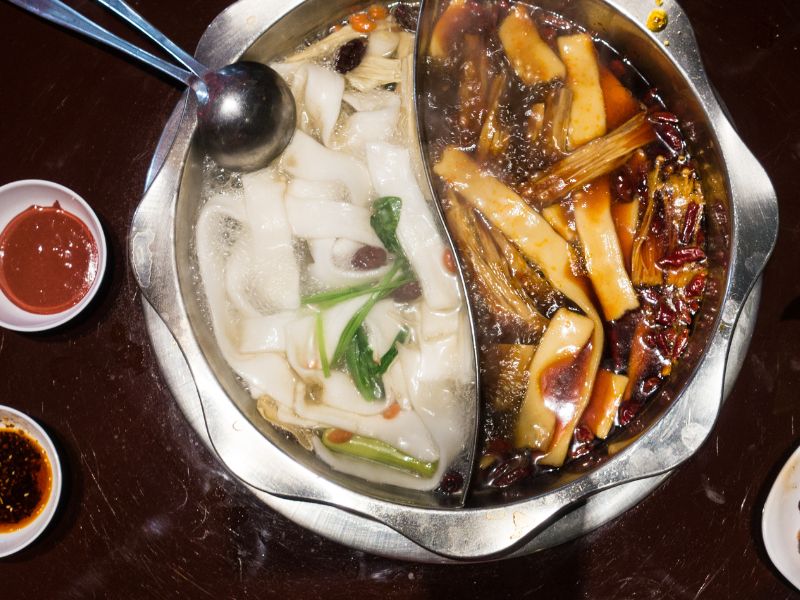
What To Eat and Drink in Dali, China
Here’s your ultimate travel guide to the must-try eats and drinks in Dali, promising an unforgettable journey for your taste buds.
Dali’s Signature Dishes
- Erhai Fish (洱海鱼): Caught fresh from the crystal-clear waters of Erhai Lake, this dish is usually grilled or steamed, seasoned with local herbs and spices, offering a taste of Dali’s natural bounty.
- Rice Noodles with Pork (过桥米线): A comforting bowl of rice noodles served with thinly sliced pork, vegetables, and a rich, aromatic broth. It’s a staple breakfast or lunch option that perfectly encapsulates Yunnan’s love for noodles.
- Crossing-the-Bridge Noodles (过桥米线): This iconic Yunnan dish consists of a steaming hot pot of broth, served alongside raw ingredients like slices of meat, vegetables, and noodles, which are cooked tableside. It’s not just a meal; it’s an experience.
- Yunnan Cheese (乳扇): Also known as “Rushan,” this unique dairy product is often grilled or fried and served with a sweet or savory dip. It’s a testament to the dairy traditions of the Bai people.
- Shanxi Mature Vinegar Peanuts (山西老陈醋花生): A popular snack or appetizer, these peanuts are mixed with mature vinegar, giving them a tangy, addictive flavor that’s hard to resist.
Must-Try Beverages
- Dali Beer (大理啤酒): Brewed locally, Dali Beer is a refreshing lager that captures the spirit of the city. It’s the perfect accompaniment to a spicy meal or a sunset by the lake.
- Sweet Osmanthus Tea (桂花茶): This fragrant tea, made from the sweet osmanthus flowers, is a favorite among locals and visitors alike. It’s known for its sweet, floral aroma and a number of health benefits.
- Highland Barley Wine (青稞酒): This Tibetan-inspired alcoholic beverage is made from highland barley and has a rich, robust flavor. It’s a must-try for those looking to sample the local spirits.
- Rose Petal Jam (玫瑰花酱): Often spread on toast or used as a sweetener for tea, this jam made from local roses adds a floral touch to any meal.
- Wild Mushroom Hot Pot (野生菌火锅): While not a drink, no culinary journey in Dali is complete without experiencing a hot pot filled with locally foraged mushrooms, a true delicacy of the region.

Tours For Visitors To Dali, China
Here’s a comprehensive list of tours you should consider to make the most out of your visit to Dali.
1. Historic Dali City Tour
Delve into Dali’s ancient past with a guided tour around the Dali Old Town. Discover the city’s well-preserved gates, walk along its ancient walls, and explore landmarks like the Three Pagodas. Learn about the rich history of the Bai people and the city’s significance along the Tea Horse Road.
2. Cangshan Mountain Hiking Experience
Embrace the great outdoors with a hike along the Cangshan Mountain range. Choose from trails that suit all levels of fitness, from leisurely walks to more challenging treks. Enjoy panoramic views of Erhai Lake and Dali below, and discover the mountain’s unique flora and fauna.
3. Erhai Lake Cycling Tour
Cycle around the picturesque Erhai Lake, stopping at fishing villages, local markets, and temples along the way. This leisurely tour offers a glimpse into the daily lives of the local communities and stunning lakeside scenery. It’s a great way to experience the natural beauty surrounding Dali at your own pace.
4. Tea Plantation and Tasting Tour
Yunnan is famous for its tea, and a visit to a local tea plantation reveals the secrets behind tea production. Learn about the ancient art of tea making, from picking to processing, and enjoy a tasting session of different varieties, including the renowned Pu’er tea.
5. Bai Culture and Artisans Workshop Tour
Immerse yourself in Bai culture with a tour that takes you to traditional Bai homes, workshops, and markets. Learn about Bai architecture, watch artisans at work creating tie-dye textiles and pottery, and perhaps try your hand at some traditional crafts.
6. Dali Street Food and Market Tour
Explore Dali’s culinary scene with a guided tour of its bustling markets and street food stalls. Sample local specialties such as fried cheese, rice noodle soup, and sweet rose cakes. This tour is a feast for the senses and offers insight into the local cuisine and ingredients.
7. Xizhou Ancient Town and Zhoucheng Village Tour
Discover the charm of Xizhou and Zhoucheng, two towns near Dali known for their well-preserved Bai architecture and vibrant local markets. In Zhoucheng, known as the ‘Town of Tie-Dye,’ you can witness the traditional process of making Bai tie-dye textiles.
8. Dali Nightlife Experience
Experience Dali after dark with a tour of the city’s best bars, breweries, and night markets. Enjoy local craft beers, taste street food delicacies, and soak up the lively atmosphere. It’s a great way to experience the city’s modern-day culture and socialize with locals and fellow travelers.
9. Meditation and Yoga Retreats
For those seeking tranquility, Dali offers several meditation and yoga retreats set in serene locations. Reconnect with nature and find inner peace through guided meditation sessions, yoga classes, and wellness workshops, all while surrounded by Dali’s stunning landscapes.
10. Bird-Watching and Nature Tour in the Wetlands
Venture into the wetlands surrounding Dali for a bird-watching tour. These biodiverse areas are home to a variety of bird species, offering a peaceful escape into nature. It’s an ideal tour for photographers and nature lovers.
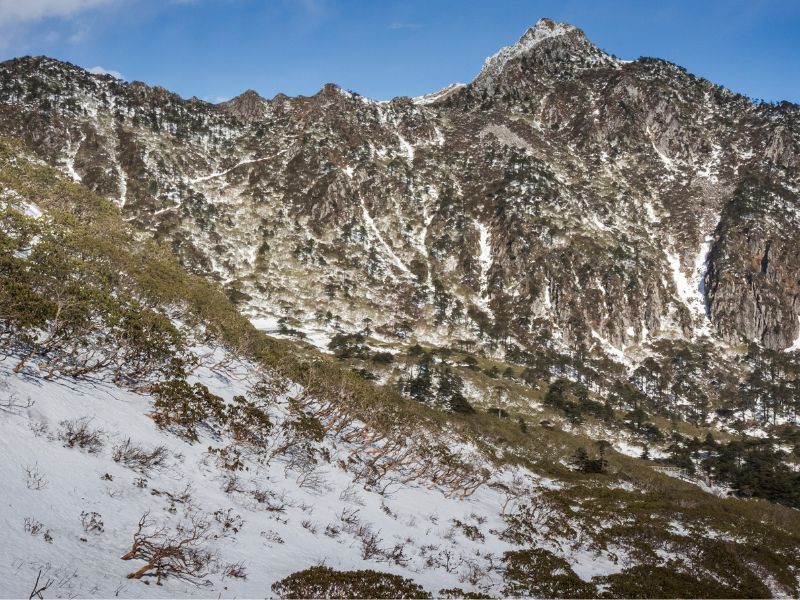
Day Trips From Dali, China
Here’s a curated list of day trips from Dali that promise to enrich your travel experience with unforgettable memories.
1. Xizhou Ancient Town
Just a short drive from Dali, Xizhou is renowned for its well-preserved Bai architecture and vibrant local culture. Stroll through the town’s bustling market, sample traditional Bai snacks, and admire the intricate designs of the historic houses. Xizhou offers a glimpse into the daily life and traditions of the Bai people, making it a must-visit for cultural enthusiasts.
2. Cangshan Mountain Hike
The Cangshan Mountain Range, with its majestic peaks and breathtaking scenery, offers numerous hiking trails suitable for all levels. Take the cable car up and hike among the clouds, exploring tranquil streams and waterfalls. The mountain’s flora and fauna add to the beauty of the hike, promising a day filled with natural wonders. Don’t forget to pack a picnic to enjoy amidst the stunning vistas.
3. Erhai Lake Cycling Tour
Cycling around Erhai Lake provides a leisurely way to take in the serene beauty of one of China’s largest freshwater lakes. The route takes you through quaint fishing villages, lush farmlands, and offers panoramic views of the lake and mountains beyond. Bike rentals are readily available, and the flat paths make this an enjoyable activity for all ages. Stop at local eateries along the way to savor fresh fish and regional specialties.
4. Shaxi Ancient Town
A bit further afield, Shaxi was once a bustling stop on the Tea Horse Road and has retained much of its old-world charm. The town’s Sideng Square, surrounded by traditional wooden buildings and the ancient stage, is a highlight. Visitors can explore the local temples, enjoy hikes to nearby villages, and immerse themselves in the tranquil atmosphere of rural Yunnan. Shaxi is an ideal destination for those looking to step back in time.
5. Weishan Old Town
Discover the lesser-known Weishan Old Town, where history comes alive amidst Ming and Qing dynasty architecture. The town’s relaxed pace, historic buildings, and friendly locals offer a stark contrast to more touristy destinations. Weishan’s local market is a treasure trove of Yunnanese snacks and crafts. The town serves as a gateway to the Weibaoshan Daoist mountain, home to centuries-old temples nestled in lush forests.
6. Three Pagodas and Chongsheng Temple
While technically in Dali, the Three Pagodas and the adjacent Chongsheng Temple complex warrant a day trip of their own. These iconic structures are a testament to Dali’s Buddhist heritage and offer stunning photo opportunities. The site’s history, combined with the panoramic views of Dali and Erhai Lake from the temple grounds, is truly mesmerizing. Visitors can explore the temple’s extensive grounds, including several newly restored pavilions and halls.
7. Bai Traditional Villages Tour
Spend a day visiting the Bai traditional villages that dot the landscape around Dali. Each village, with its unique customs, architecture, and crafts, offers a different perspective on Bai culture. Participate in a traditional tie-dye workshop in Zhoucheng or explore the ancient irrigation systems in Shuanglang. These villages provide an intimate look at the Bai way of life, past and present.
8. Butterfly Spring
Nestled at the foot of the Cangshan Mountains, Butterfly Spring is a natural spring surrounded by a lush garden and thousands of butterflies in the right season. The site is famed for its annual “Butterfly Meet,” where swarms of butterflies gather, creating a spectacular sight. The spring’s clear waters and the surrounding greenery make it a peaceful retreat. It’s a spot that combines natural beauty with local legend, offering a tranquil escape from the bustling city.
9. Jizu Mountain
Regarded as one of the most sacred Buddhist mountains in Yunnan, Jizu Mountain invites visitors to explore its ancient temples, serene forests, and stunning views. The hike to the summit is rewarded with panoramic views of the surrounding countryside and a chance to visit the historic Jinding Temple. The mountain is a site of pilgrimage and offers a peaceful atmosphere for reflection and exploration. It’s an ideal trip for those seeking both spiritual and physical elevation.
10. Puzhehei Scenic Area
For those willing to venture a bit further, the Puzhehei Scenic Area offers an idyllic landscape of karst formations, clear lakes, and lush vegetation. Known as “a place where fish and shrimp play,” Puzhehei is perfect for kayaking, photography, and enjoying Yunnan’s natural beauty. The area is also home to several small ethnic villages, providing insight into the diverse cultures of the region. It’s a paradise for nature lovers and photographers alike.
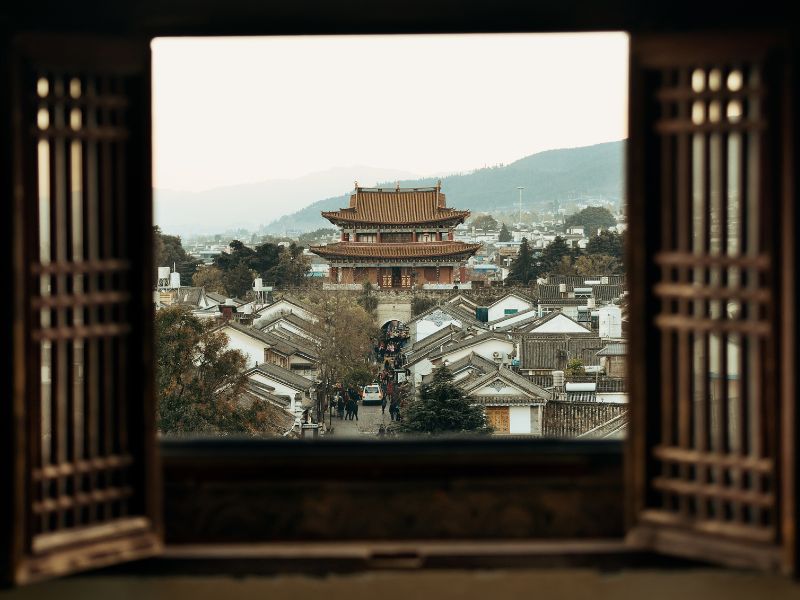
Dali Transportation Guide
Here’s a detailed guide on getting around Dali, ensuring you make the most of your visit.
Getting to Dali
By Air: The closest airport is Dali Airport, serving both domestic and limited international flights. From the airport, you can take a taxi or a shuttle bus to reach Dali city center or directly to the Old Town.
By Train: Dali has its own railway station, connecting it with major Chinese cities. The high-speed trains offer a comfortable and efficient way to travel to Dali from places like Kunming, the provincial capital.
By Bus: Long-distance buses run frequently between Dali and other cities and towns within Yunnan Province, including direct routes from Kunming, Lijiang, and Shangri-La.
Getting Around Dali
By Bicycle: Renting a bicycle is a popular way to explore Dali and its surroundings, especially around Erhai Lake and the Old Town. There are numerous rental shops offering bikes for hourly or daily rates.
By Electric Scooter: For a faster mode of transport, electric scooters are available for rent. They offer a fun and efficient way to navigate the city and surrounding countryside.
By Local Bus: Dali’s local bus service is an economical option for getting around, with routes covering the city, Dali Old Town, and major attractions. Buses are frequent, and routes are well-marked, making it easy to navigate the area.
By Taxi: Taxis in Dali are readily available and reasonably priced. They can be hailed on the street or ordered through your hotel. Always make sure the meter is running to avoid overcharging.
On Foot: Walking is perhaps the best way to explore Dali Old Town, where the streets are lined with historical buildings, artisan shops, and cafes. Many of Dali’s attractions are within walking distance of each other, making it a pedestrian-friendly option.
Private Car or Van Hire: For those looking to explore more remote areas or preferring a personalized itinerary, hiring a private car or van with a driver for the day is a convenient option. This can be arranged through travel agencies or hotels in Dali.
Tips for Travelers
- Public Transportation: While public buses are cheap and efficient, they can get crowded during peak tourist seasons. Always keep an eye on your belongings.
- Bicycle Rides: When cycling, especially around Erhai Lake, be prepared for sudden weather changes and carry necessary supplies like water and snacks.
- Navigating the Old Town: The charm of Dali Old Town is best experienced on foot. Wear comfortable shoes and be ready to explore its narrow, cobbled streets.
- Language Barrier: Not all taxi drivers or bus operators speak English, so it’s handy to have your destination written in Chinese or a map app to show them.

Where To Visit After Your Trip To Dali?
Here’s a list of destinations that promise to extend your adventure with more unforgettable experiences.
1. Lijiang
Just a few hours north of Dali, Lijiang awaits with its ancient town, a UNESCO World Heritage site, famous for its well-preserved architecture and waterways. Explore the cobbled streets, visit the iconic Black Dragon Pool, and soak in the views of Jade Dragon Snow Mountain. Lijiang’s vibrant Naxi culture and bustling night markets offer a deep dive into the local heritage.
2. Shangri-La
Venture further into the mystical landscapes of Yunnan to discover Shangri-La, a city that embodies the region’s natural and cultural splendor. The Songzanlin Monastery, resembling a mini Potala Palace, and the breathtaking views of Pudacuo National Park are highlights. Shangri-La is also the gateway to the Tibetan cultural area, offering a glimpse into the traditions and lifestyles of the Tibetan people.
3. Kunming
Known as the “City of Eternal Spring” for its pleasant climate, Kunming, the provincial capital, offers lush parks, historic temples, and the mesmerizing Stone Forest. It’s a vibrant city where modernity meets tradition, offering a range of cultural experiences, from the dynamic Yunnan Nationalities Village to the tranquil Green Lake Park.
4. Yuanyang Rice Terraces
For those willing to venture further, the Yuanyang Rice Terraces offer some of China’s most spectacular landscapes. These intricately constructed terraces change colors with the seasons and provide breathtaking sunrise and sunset views. The area is also home to several ethnic minorities, including the Hani people, offering rich cultural interactions.
5. Tiger Leaping Gorge
One of the deepest gorges in the world, Tiger Leaping Gorge offers one of the most dramatic treks in China. The trail provides stunning views of the Yangtze River as it forcefully makes its way through the gorge. It’s a challenging hike that rewards adventurers with unparalleled natural beauty and a sense of accomplishment.
6. Jinghong, Xishuangbanna
Experience the tropical side of Yunnan in Jinghong, the heart of the Xishuangbanna Dai Autonomous Prefecture. The region is known for its lush rainforests, wild elephants, and the rich culture of the Dai people. Visit the Xishuangbanna Tropical Botanical Garden and enjoy a traditional Dai water splashing festival if you’re there in April.
7. Puzhehei
Nicknamed “the Guilin of Yunnan,” Puzhehei offers stunning karst landscapes, clear lakes, and peaceful boat rides. The area is dotted with small villages and vibrant lotus blooms in the summer, offering a perfect blend of natural beauty and rural life.
8. Luoping
In spring, Luoping transforms into a sea of yellow as the canola flowers bloom, creating one of China’s most stunning natural displays. The area is also known for its unique karst formations and the spectacular Jiulong Waterfall.
9. Dianchi Lake
Just outside Kunming, Dianchi Lake offers a scenic escape with its vast waters bordered by mountains and parks. Enjoy a leisurely boat ride, explore the surrounding temples and pavilions, and don’t miss the impressive Dragon Gate in the Western Hills.
10. Jianshui
An ancient town with over 1,200 years of history, Jianshui is renowned for its traditional architecture, including the Chaoyang Gateway Tower and the Confucius Temple. It’s a lesser-visited gem that offers a deep dive into the Ming and Qing dynasties’ culture and architecture.
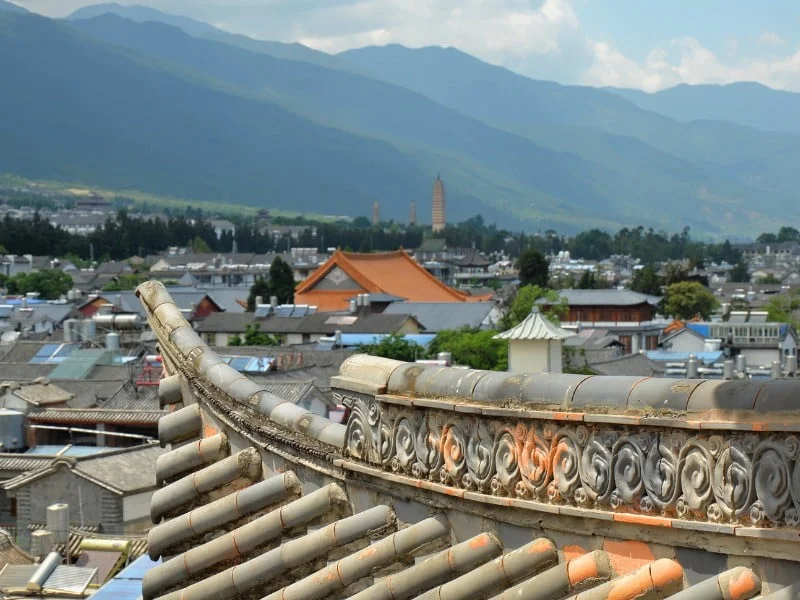
Dali Travel Guide: Final Thoughts
As we draw our Dali travel guide to a close, let’s reflect on why this city is more than just a stop on your itinerary—it’s a journey into the heart of Yunnan’s mesmerizing blend of nature, culture, and history.
A City That Lives Its History
Dali doesn’t just rest on the laurels of its past; it wears its history with pride. From the ancient walls that encircle the old town to the tranquil temples that have witnessed centuries unfold, Dali offers a living, breathing history lesson that’s accessible to all. It’s a place where every stone tells a story, inviting you to listen.
Nature’s Masterpiece
The natural beauty surrounding Dali is nothing short of breathtaking. Whether it’s the serene vistas of Erhai Lake that call for contemplation or the rugged peaks of the Cangshan Mountains that challenge adventurers, Dali’s landscapes serve as a backdrop for endless exploration. It’s a reminder of the simple beauty that nature offers to those willing to seek it out.
A Melting Pot of Cultures
Dali stands as a testament to the diversity and richness of Yunnan’s cultural heritage. Here, the Bai people’s traditions thrive alongside a growing community of artists, travelers, and expats, creating a vibrant mosaic of life that’s as colorful as the tie-dye textiles found in the local markets. Dali is a place where cultures not only coexist but flourish together.
The Flavors of Dali
Your taste buds are in for a treat in Dali, where the cuisine is as diverse as its landscapes. From street food stalls serving up mouth-watering snacks to restaurants offering fusion dishes that marry local ingredients with international flavors, Dali’s culinary scene is a delight. Each meal is an opportunity to explore the region’s bounty.
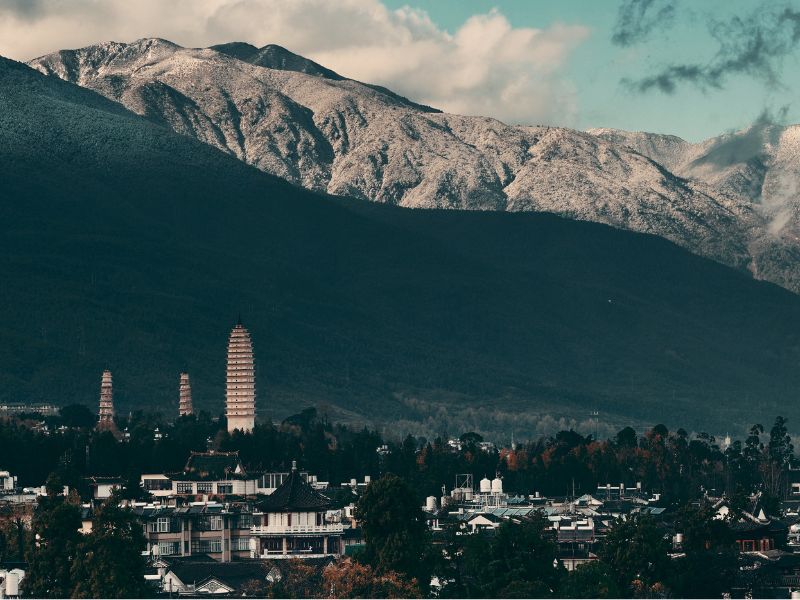
Ode To Dali
In the land of Dali, where mountains meet the sky, A place of beauty, where ancient echoes lie. Wander through the streets of Old Town’s embrace, With Bai-style architecture, a glimpse of grace.
Three Pagodas stand tall, proud and strong, Whispering tales of history, a legacy that’s long. Erhai Lake glistens, serene and pure, Reflecting the beauty that will endure.
Xizhou Village beckons, with its charm untold, Bai culture and traditions to unfold. Step into the past, where time slows down, As ancient customs and crafts are found.
Cangshan Mountain calls, with trails to explore, Nature’s wonders, to captivate and adore. Rivers and waterfalls, a symphony of sound, A sanctuary of peace, where solace is found.
Shaxi’s ancient streets, a portal to the past, Trade routes and stories that forever last. Shibaoshan’s grottoes, a spiritual retreat, Carved in stone, a treasure to meet.
Journey further to Lijiang, Shangri-La, and beyond, Yunnan’s beauty, an enchanting bond. Immerse in the colors, the flavors, the sights, A traveler’s delight, where dreams take flight.
Oh, traveler, let Dali’s essence touch your soul, With each step, a new story to unfold. Embrace the wonders, the cultures, the art, In the heart of Dali, a journey to start.
